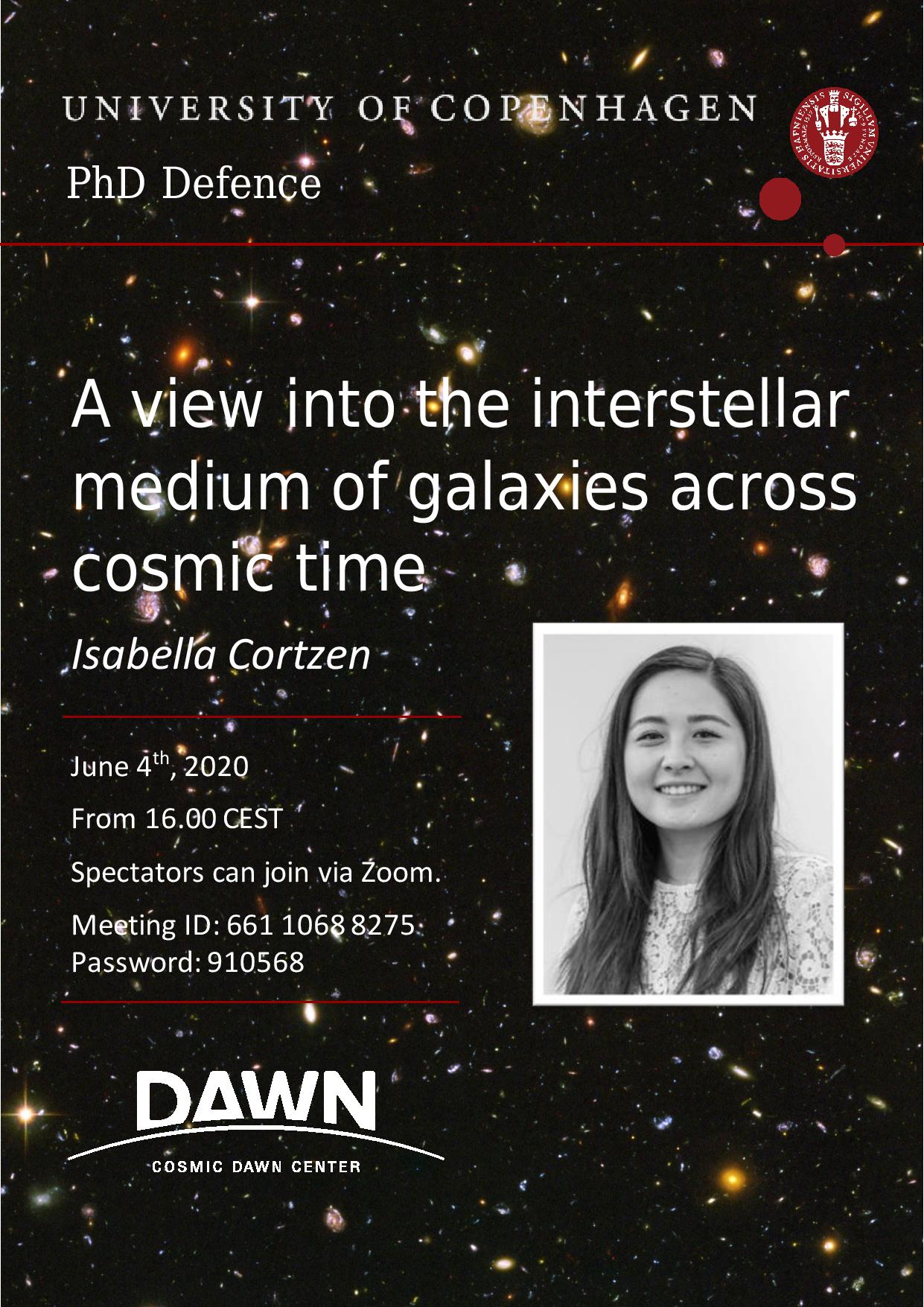Isabella Chi Cortzen PhD defence: The view into the interstellar medium across cosmic time
We are very proud to announce that Isabella Chi Cortzen of the Cosmic Dawn Center will defend her thesis on the 4th of June 2020.

The view into the interstellar medium across cosmic time
Understanding the formation and evolution of galaxies throughout the history of the Universe is one of the major challenges in astrophysics. Thanks to powerful state-of-the-art facilities, we can now study not only the vast diversity of evolved galaxies in our nearby Universe but also distant systems whose light was emitted billions of years ago. What processes and mechanisms determine how galaxies grow and evolve? A precious tool is to study the gas and dust in the interstellar medium, which provides the material and the framework for the birth of new stars and records the past history of a galaxy.
In this thesis, I explored and compared several methods to measure the amount of molecular gas in galaxies. In the first project, I explored the potential of the emission from polycyclic aromatic hydrocarbons (PAHs) as a new proxy for the molecular gas mass and discussed the implications it may have for the upcoming launch of the James Webb Space Telescope. In the second part of the thesis, I explored the dust properties of a distant and extreme galaxy, GN20, forming thousands of stars per year when the Universe was less than 2 billion years old. Over the last few years, several puzzling findings have started to emerge for this and similar distant extreme galaxies, including an apparent absence of evolution of their dust temperature with cosmic time and a stellar mass budget that is inconsistent with the inferred dust production. These properties are often derived under the assumption of optically thin dust emission, although a free opacity dust model provides an equally good description of the far-infrared spectral energy distribution but returning radically different physical properties. In my work, I presented a new method that relies on the empirical correlation between the dust temperature and the gas excitation temperature derived from the neutral atomic carbon lines, [CI], to break the degeneracy between optically thin and thick dust solutions in extreme star-forming galaxies and ease the observed tensions. Finally, I will present preliminary results of a project to study the radio emission in massive quiescent galaxies at cosmic noon and investigate the presence of active galactic nuclei and possible residual pockets of dust to gain insight into the physics of quenching.
Only the thesis committee is allowed on the premises, others will have to join remotely.
